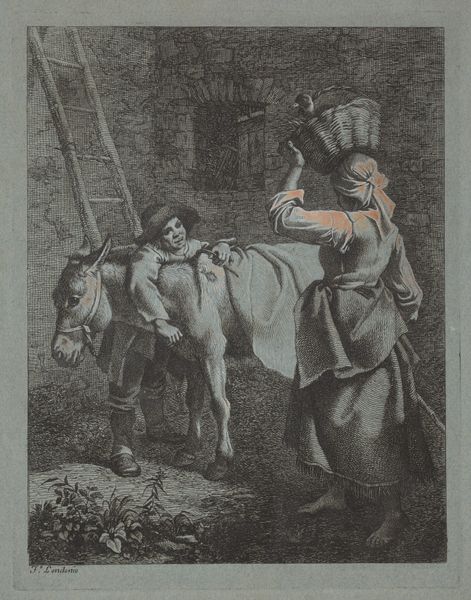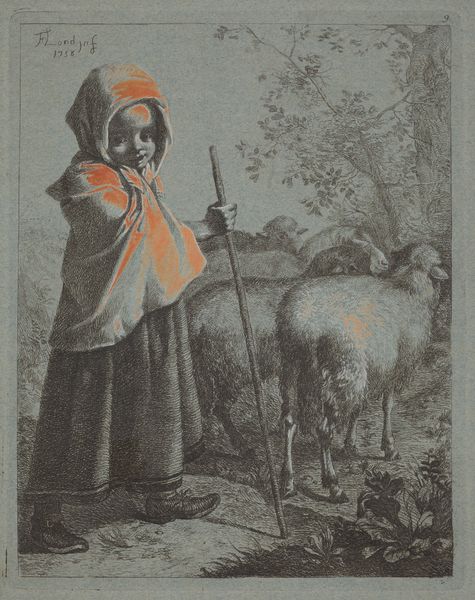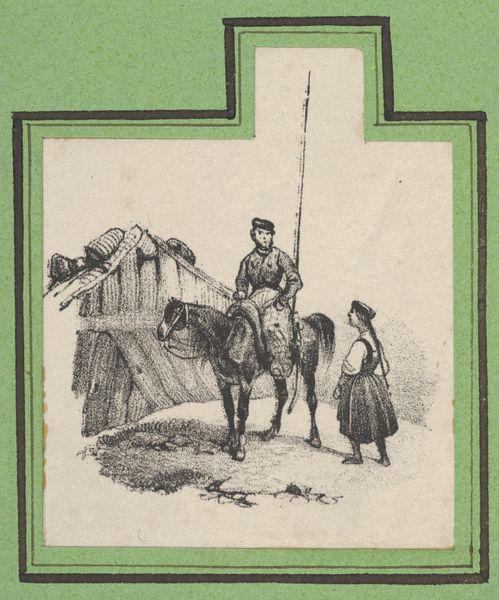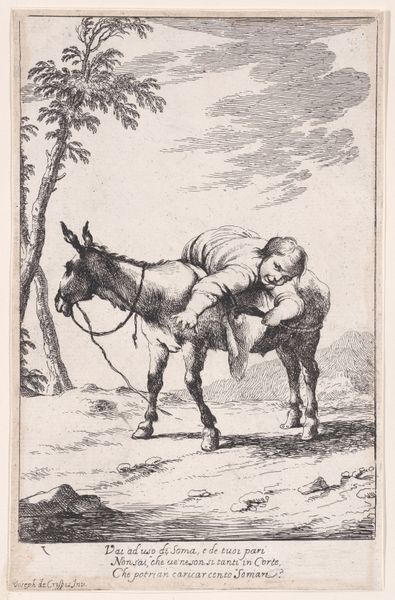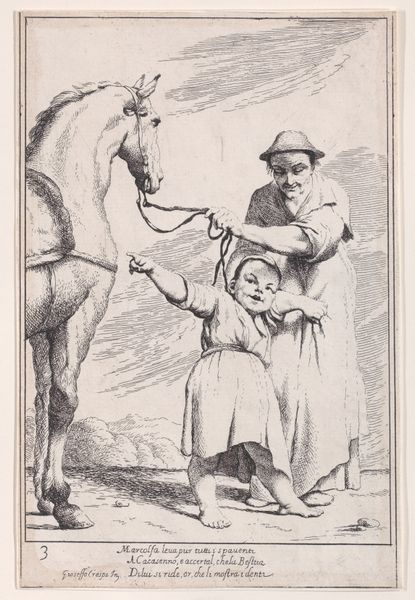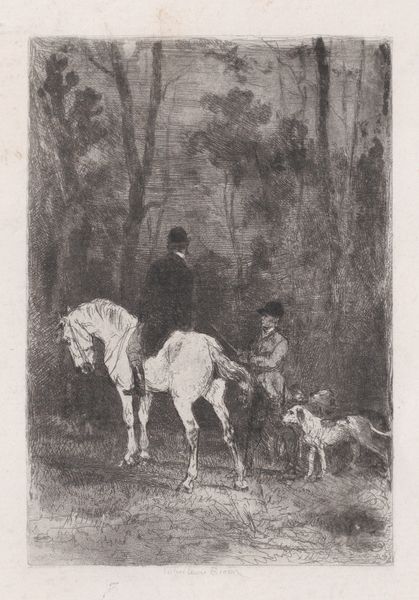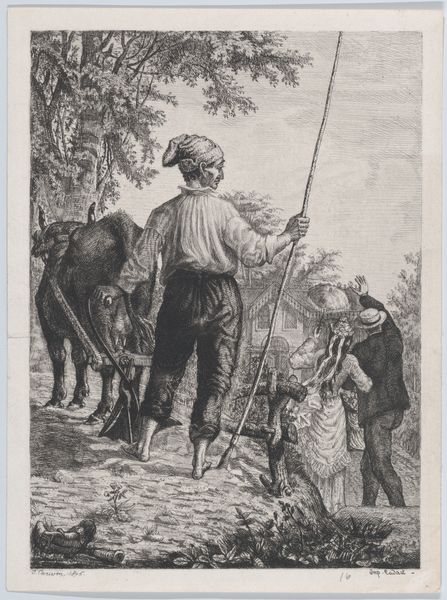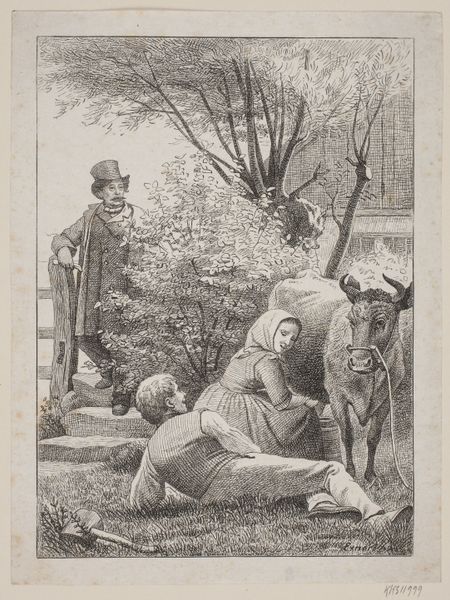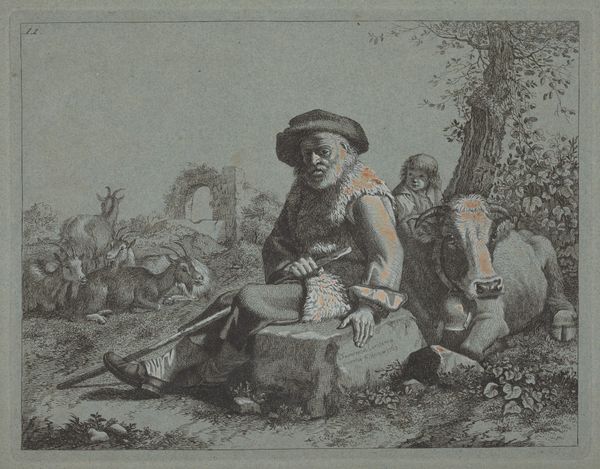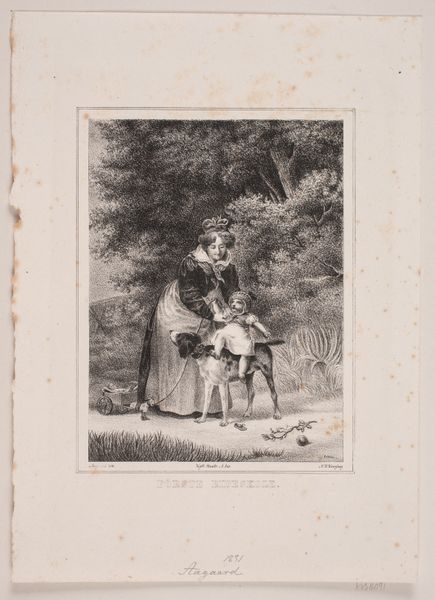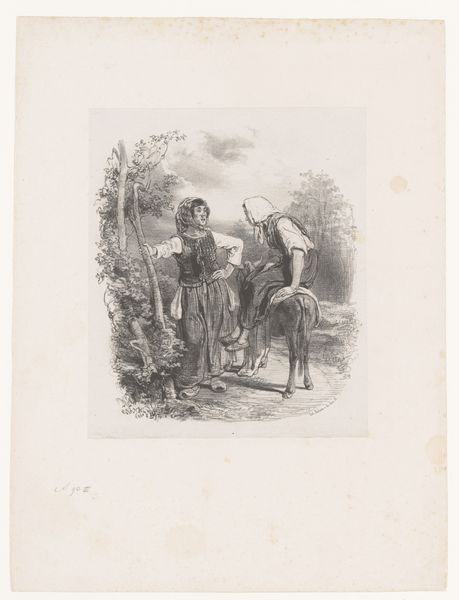
drawing, print, pencil, engraving
#
drawing
#
baroque
# print
#
pencil sketch
#
landscape
#
classical-realism
#
figuration
#
pencil
#
genre-painting
#
engraving
Dimensions: plate: 24.5 x 19 cm (9 5/8 x 7 1/2 in.) sheet: 41.1 x 28.4 cm (16 3/16 x 11 3/16 in.)
Copyright: National Gallery of Art: CC0 1.0
Curator: This engraving, "Peasant Woman Seated on a Donkey and a Peasant Man," is attributed to Francesco Londonio. There's a wonderful attention to detail in the rendering of clothing and the natural setting using engraving techniques. Editor: My first impression is one of restrained energy. The landscape feels static, yet the figures suggest a journey, a dynamic captured through simple lines and subtle shading, hinting perhaps, at the complexities of rural life and the labor that entails. Curator: Londonio, active in the 18th century, seems particularly invested in portraying the labor of the peasantry, not just their activities but the materials and processes inherent in their daily existence. The print medium itself, with its reliance on skilled handiwork, echoes the artisan's contribution, parallel to that of his subjects. Editor: Yes, the artwork can be viewed through the lens of power dynamics inherent in observing these subjects. How often do we consider that these images served, perhaps unconsciously, to reinforce existing social hierarchies, positioning the landowning class as viewers and the rural populace as the object of study? The donkey and the walking stick become symbols of class and mobility. Curator: I'd like to point out how the clothing of each peasant suggests both practicality and social context. The fabric’s weave, the tailored cut; each detail is deliberately rendered, alluding to the economy and material realities of 18th-century agrarian society. Editor: Absolutely. Looking closer, it prompts the question of who is burdened more, the donkey or the man leading? I am reminded of similar visual narratives depicting those excluded from the dominant social structures, thus underscoring the political discourse embedded within seemingly innocent genre scenes. Curator: Ultimately, I think, it's the subtle skill that captures not only their external appearances but something of their daily experience. It’s like looking at a snapshot of labour meeting life meeting landscape. Editor: Precisely. This piece really encourages an understanding of how such simple genre-paintings were used to reinforce the accepted societal framework while revealing social issues which we should still analyze today.
Comments
No comments
Be the first to comment and join the conversation on the ultimate creative platform.
